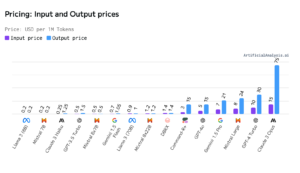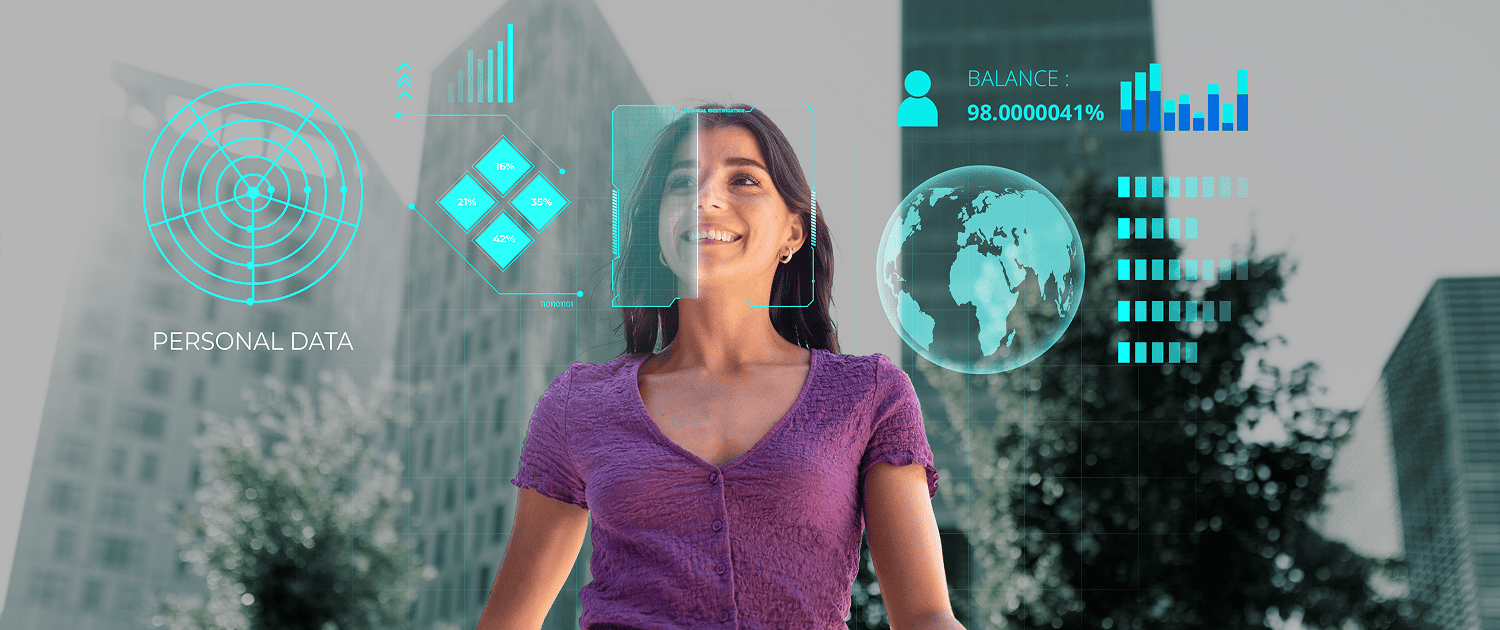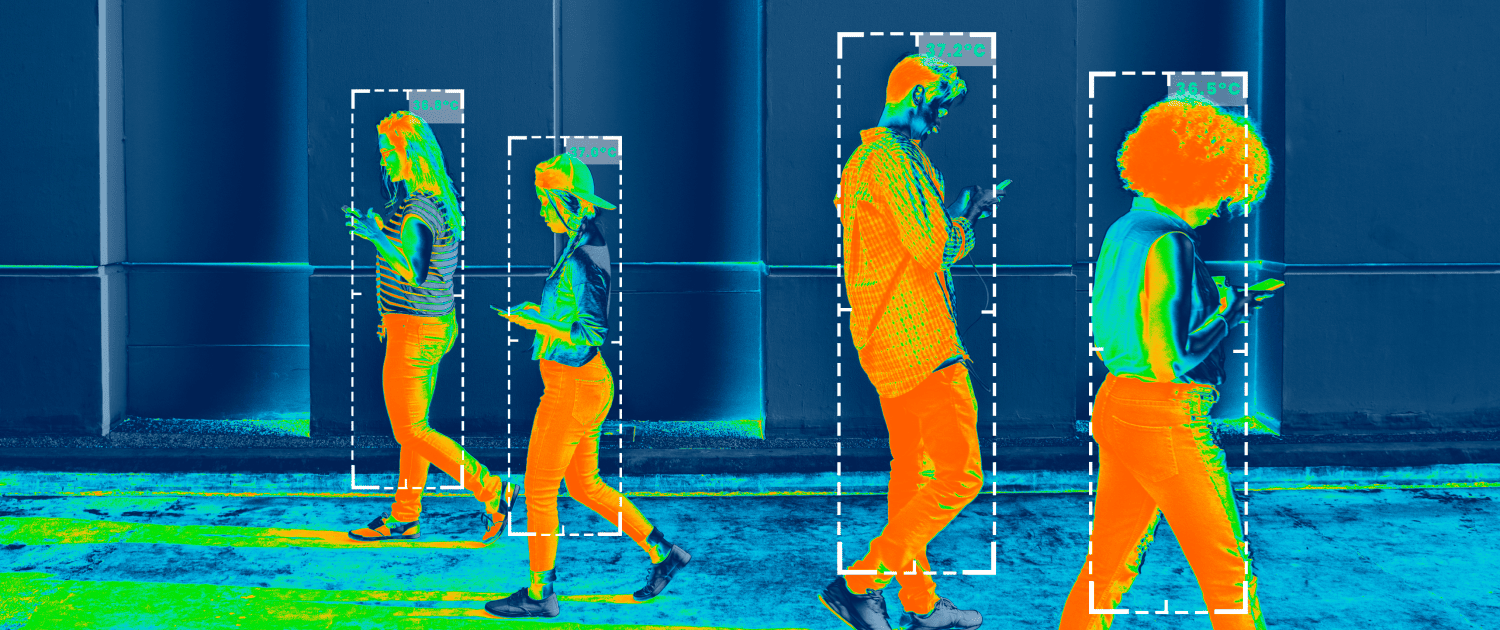
These days, the topic of AI can’t leave anyone indifferent, being the #1 buzzword in the world. The interest is truly justified, as AI, and now GenAI, revolutionizes entire industries, processes, and many things we aren’t even aware of.
While the world’s eyes are fixed on AI capabilities, hundreds of companies are already using it to their advantage. And here is a fair question: What’s the fare to jump on this bandwagon? What’s the cost of AI development
In this article, we’ll try to break it down for you.
How is AI Used in Businesses?
First things first. AI in business is used to streamline operations, enhance decision-making, and drive innovation. From automated customer support to greater operational efficiency – AI fits various business needs and is completely industry-agnostic.
According to the latest Forbes Advisor reports, more than 60% of business owners believe AI will increase productivity. By productivity we mean the whole spectrum of tasks and operational activities that ultimately lead to higher profits and lower expenses.
Here’s the most common spheres business apply AI and GenAI:
1) Information technology (IT) operations and software development – streamline data management and maintain IT infrastructure by automating tasks such as performance monitoring, workload scheduling, software testing, and data backups.
2) Customer service – providing instant, personalized support through chatbots and virtual assistants, automating ticketing systems, performing sentiment analysis, and integrating multi-channel support.
3) Human Resources – automates and accelerates tasks that involve collecting, analyzing, or processing information, such as managing and analyzing employee records, payroll, recruitment, benefits administration, and employee onboarding
4) Sales and marketing – CRM automation and optimization, email marketing, social media, and advertising software. Generative AI can create all kinds of creative and useful content, such as scripts, social media posts, blog articles, design assets.
5) Accounting – Many accounting software tools now use AI to create cash flow projections or categorize transactions, with applications for tax, payroll, and financial forecasting.
The list is almost endless, and we could go on. However, these are vivid examples of how AI is transforming organizations from A to Z.
Types of AI Solutions for Business
There’re 2 basic approaches to implementing AI in organizations: off-the-shelf AI solutions and custom AI software. This choice directly affects the AI development cost.
Custom AI software is tailored specifically to meet the unique requirements of a specific company. In contrast, off-the-shelf or out-of-the-box (OOTB) AI software is a pre-built solution provided by vendors or the AI development company that addresses the needs of various businesses. So, what are the fundamental differences between these 2 approaches, and which is better to choose?
When it comes to cost, off-the-shelf AI software offers a quick and affordable way to gain valuable insights driven by artificial intelligence without the higher expenses associated with custom AI. However, pre-made AI software is often inflexible and may not meet all business needs and challenges.
Benefits and Use Cases of the Off-the-Shelf AI Software
- Cost-effective – typically, more affordable than custom solutions, reducing initial investment costs.
- Quick deployment – ready-made and easy to implement, allowing businesses to start using it quickly.
- Support and documentation – comes with comprehensive support and documentation from the vendor.
- Wide range of applications – versatile and applicable to various industries and use cases.
Examples of off-the-shelf AI tools include ChatGPT, Claude, Chatfuel, Botsify, Jasper, Notion AI, Reclaim AI, and more. Notable AI tools in the marketing and sales sphere include Jasper, WriteSonic, Grammarly, Canva Pro, and Albert.ai.
For information technology productivity, tools like GitHub Copilot, TabNine, and Otter.ai are prevalent.
Their subscription costs vary from $10 per month to $500, $2000 and more.
Benefits and Use Cases of the Custom AI Software
- Tailored solutions – designed specifically to meet the unique needs and requirements of a business, ensuring a perfect fit for existing processes and workflows.
- Competitive advantage – provides a unique solution that can differentiate a business from its competitors, offering specialized features and capabilities.
- Scalability – Custom software can be scaled as the business grows or as new needs arise, adding vital features on demand.
- Perfect integration with existing systems – custom software integrates with available technologies, providing a unified and efficient operational environment.
- Security – offers enhanced security features tailored to the business’s specific needs, especially critical in healthcare or finance operations.
- User experience – in-house software designed with your end-user (customers or employees) in mind, offering a more common interface that can boost adoption and productivity.
Custom AI services can be implemented in various ways:
- AI consulting;
- AI solution development (incl. feature enablement);
- API integration.
As you’ve already got, these solutions are built according to your standards and, that’s why, the average AI development cost would greatly fluctuate.
AI Solutions Infrastructure
To provide you with a better understanding of AI app development cost for custom solutions, we’ll reveal the parts of typical AI solution infrastructure for your AI model (the framework AI will use to process and interpret your data to get the insights).
Here’s the components you should consider:
Hardware part
The more complex and sophisticated AI model you’re developing, the more resources you need for your data training and AI deployments.
AI proof of concept, small or medium-sized projects are usually run in the cloud as you can scale as you want and add any extra capacity. In this case, AI development cost would depend on the pricing and billing models you chose in Amazon Web Services (AWS), Google Cloud Platform (GCP), Microsoft Azure, IBM Cloud, or other cloud vendor.
For large-scale AI projects requiring intensive processing, on-premises infrastructure is preferred:
- GPUs (Graphics Processing Units) manage the parallel processing demands of machine learning algorithms.
- High-Performance Computing (HPC) systems are built to manage intricate computational tasks quickly.
- TPUs (Tensor Processing Units) are specifically designed for neural network machine learning tasks.
- Neural Network Processors are tailored to optimize the operations of artificial neural networks.
Solid hardware requires significant upfront and maintenance investments. For newcomers to AI or those unsure about expanding their datacenter, starting with cloud infrastructure is advisable.
Software part
- Machine Learning frameworks – Tools such as TensorFlow, PyTorch, scikit-learn, and Keras provide developers with pre-built libraries and functions to create and train AI models.
- Data processing libraries – Libraries like Pandas, NumPy, and SciPy are essential for handling and processing large datasets, a fundamental part of training and inferring AI models. These tools facilitate efficient data manipulation and analysis.
- Scalable Storage Solutions – cloud storage, data lakes, and distributed file systems ensure that large volumes of data are accessible and manageable, supporting the scalability and performance of AI applications.
- APIs – use open access models to integrate AI functions into existing systems.
Considering these components makes it easier to estimate the time and cost of AI development.
Cost Breakdown: Factors Affecting AI App Development Cost
Finally, the part why we are all here. We understand that’s taking so long, but it’s important to see a clear composition of everything.
On premises | |
| GPUs | range from $1,000 to $10,000 per unit, depending on the specifications and performance. |
| AI accelerators | FPGAs can range from $2,000 to $5,000, while ASICs can vary widely based on customization |
| TPUs | TPUs can cost between $8,000 and $10,000 per unit. |
| Storage Solutions | range from $1,000 to $100,000 or more annually, based on storage capacity and access requirements |
AI Models: Price Comparison (APIs)

https://artificialanalysis.ai/models
The more complex an AI model is, the higher the training costs and total AI app development cost.
| Staff costs/ Role | Rates per hour (rates vary depending on location and the level of seniority) |
| AI Engineer | $55-200 |
| Data Scientist | $55-150 |
| ML Engineer | $55-150 |
| Software Engineer | $35-90 |
Every other project requires the unique skills set and expertise, and correspondently, time and cost of development of AI. Depending on the complexity, different specialists may be involved – data scientists parse and prepare the data, ML engineers build and refine the models, and domain experts to ensure the AI’s outputs are relevant and accurate.
The rough estimate for the cost of AI development starts from $5000 and can reach hundreds of thousands. The exact cost depends on the complexity of the project and the specialists involved, such as data scientists, ML engineers, and domain experts. Want to get a precise estimation for your case – check our previous calculations or reach out to Crunch experts for qualified advice.
AI Projects Examples – Crunch.is
Revealing the average AI development cost, we also want to demonstrate the indisputable value of AI for business. Our team is proud to share these 2 examples of AI development projects:
Clinical trial screening with AI
The project’s idea was to streamline and accelerate patient selection for trials while ensuring precise matching of candidates with study criteria.
We deployed advanced NLP algorithms to process extensive unstructured medical records, extracting crucial information including patient demographics, medical histories, and eligibility criteria. Then, we developed a robust predictive model using machine learning algorithms for real-time predictions of patient eligibility.
To break down data silos and enable smooth integration across different healthcare systems, we established semantic interoperability.
AI-powered logistics management
The client reached out to us to support and enhance their existing platform for all logistics and transportation activities. Except for the web and mobile apps, our team also worked on the automatic generation of optimal routes regarding load capacities, multiple time windows, cross-docking, and other indicators.
We developed a flexible ML algorithm that dynamically creates the most efficient transportation plans by considering over 30 factors, including weight, volume capacities, and time windows.
Conclusion
We hope this guide on the cost of AI development provides clarity on real AI development costs, fingers crossed! In all other cases, do not hesitate to ask professional advice for any of your AI ideas. The value gained from AI implementation will definitely pay off.







